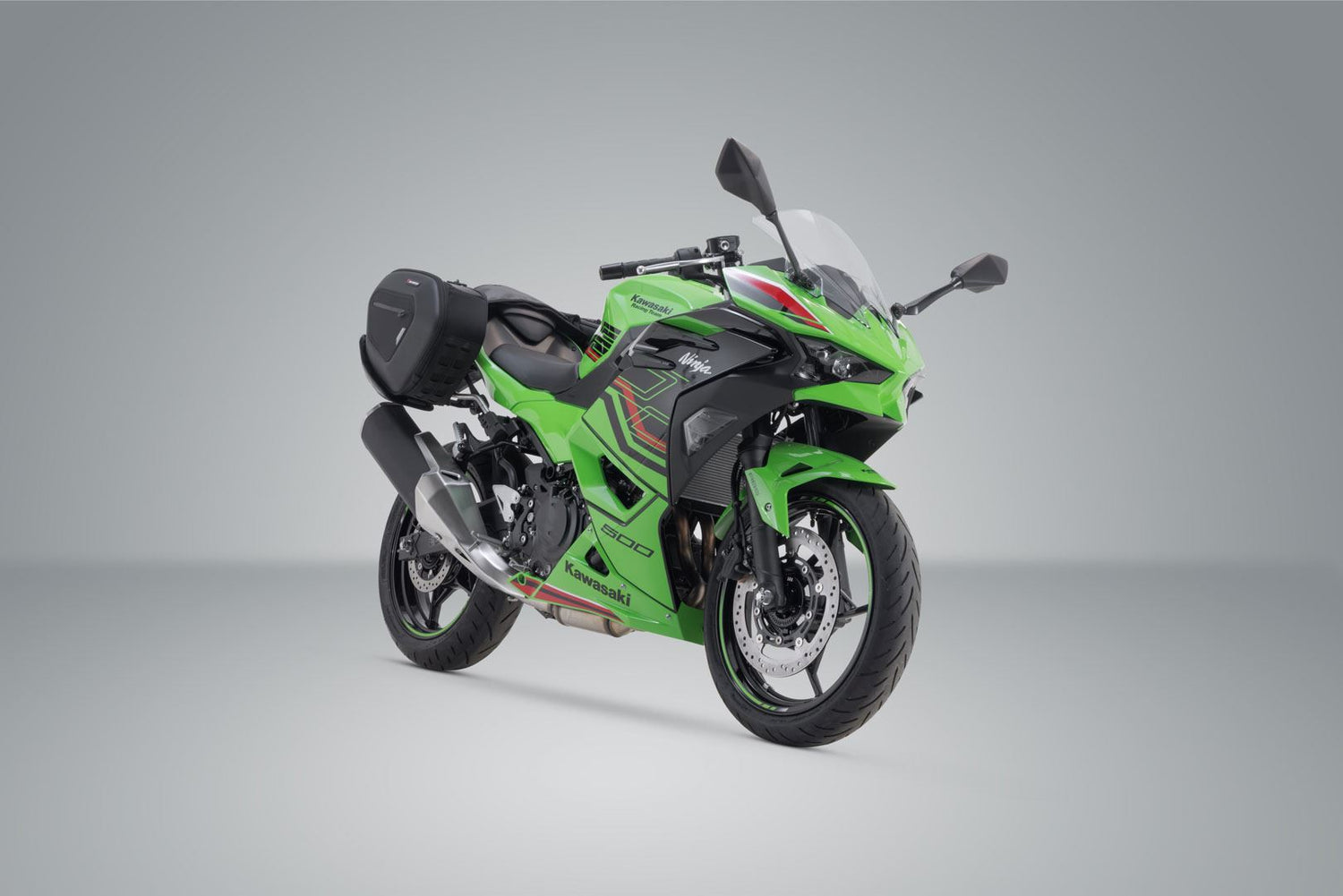Crazy homemade steering system aims to improve cornering speed
This may make your brain hurt, but it’s a wholly unique way of answering an age-old problem.

“I couldn’t find anything like it,” says Australian inventor Kent Shillitoe of his mind-bending Kejashi Steering System. “That’s why I decided… to dust off my welder and bring my idea to life.”
That explanation of the origins of the system is probably the easiest thing to understand about it. We still have so many questions.
What you are looking at here is an entirely new and unique (and, from an average motorcyclist’s perspective, terrifying) way of thinking about motorcycle steering. The Kejashi system gets its name from its creator: KEnt JAmes SHIllitoe. Dumbing things down (so that I can understand them), the system consists of a wing and a steering column that shifts left or right by as much as a foot.
Why? The answer to that question starts with another: how to help MotoGP riders get around a track faster?
“My main aim… was to reduce lean angle for a given corner speed, as we’re stuck at the limit,” Shillitoe explains in a video he produced on his invention. “Less lean angle is favourable, as it allows the suspension to work properly.”
In other words, although it looks really cool to see riders tipping their bikes into elbow-dragging leans, things could work much better, and riders could be much faster through corners, if they were able to remain more upright through those corners. And this is important, Shillitoe says, because “as a motorcyclist, the gap between Formula One and MotoGP, in terms of lap times, is just embarrassing” - his opinion, not ours!
One might argue that the roughly 1,000 horsepower of an F1 car might be largely responsible for that gap. But, no, Shillitoe puts the blame on cornering ability. And he looked to F1 for a solution: wings.
Wings on cars are nothing new in racing. In F1, wings are mounted to the front and rear of the car and use aerodynamics to help push the car down, onto the track. This downward force increases grip and stability, and is especially useful in helping the cars tear through high-speed turns. What if a bike could use the same tech?
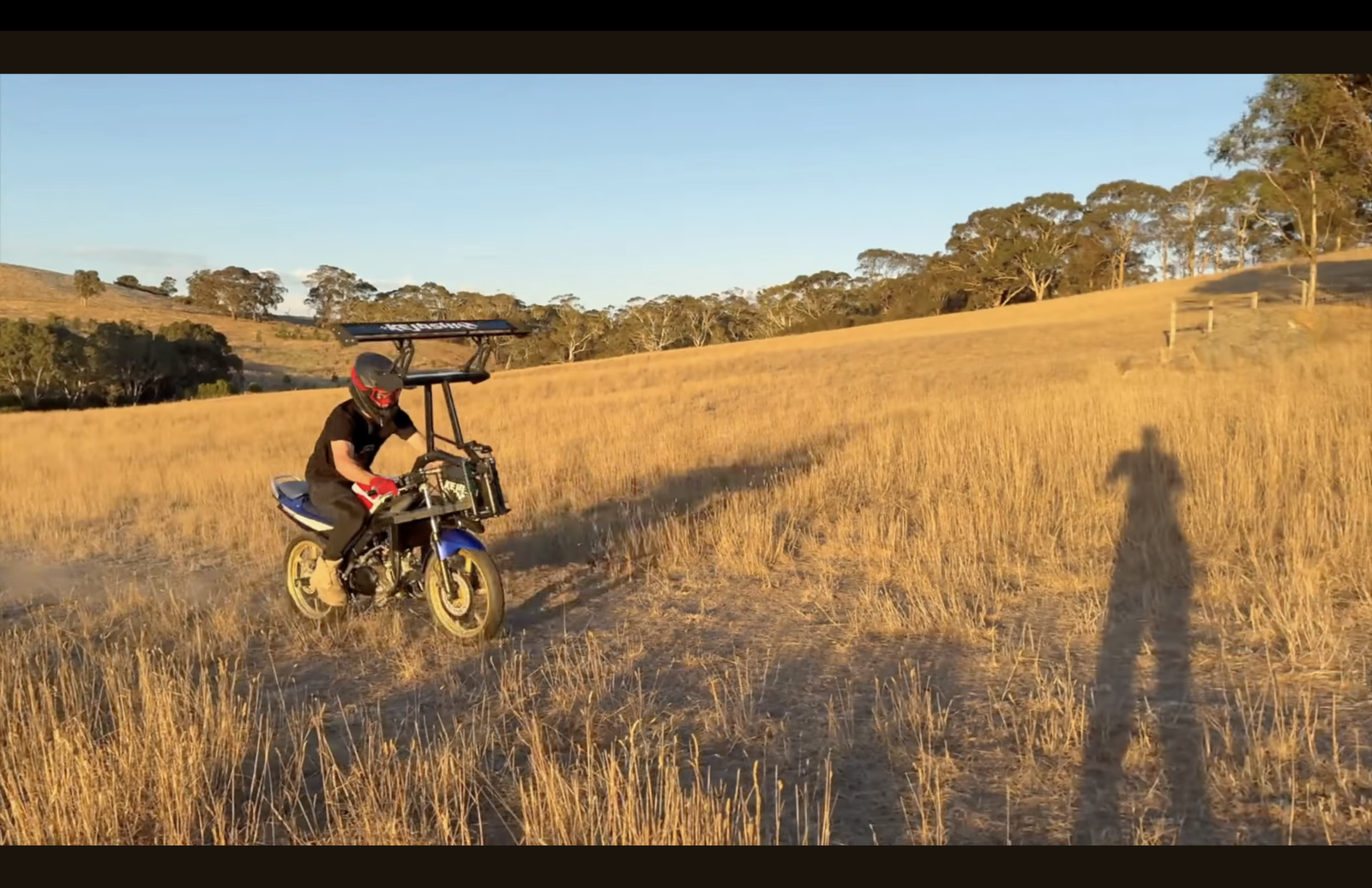
Well, to a certain extent, that’s something that’s already being attempted. You’ll have spotted the presence of wings on MotoGP bikes in recent years, with the feature increasingly also showing up on road bikes. But these wings are tiny relative to the ones used in F1, and not nearly as useful - partially because of the way a motorcycle corners.
Cars don’t lean, so they’re able to keep their wings pretty much level. That’s when a wing is most effective - when it is more or less parallel to the road surface and pushing a vehicle straight down.
If you want to ride a motorcycle fast through a corner, you’re never going to eliminate leaning completely. But when the wings on motorcycles are angled more than 45 degrees, they can actually start to work against the rider - pushing him or her to the outside of the corner. Modern MotoGP riders can hit angles in excess of 60 degrees, potentially causing themselves more harm than good on wing-equipped bikes.
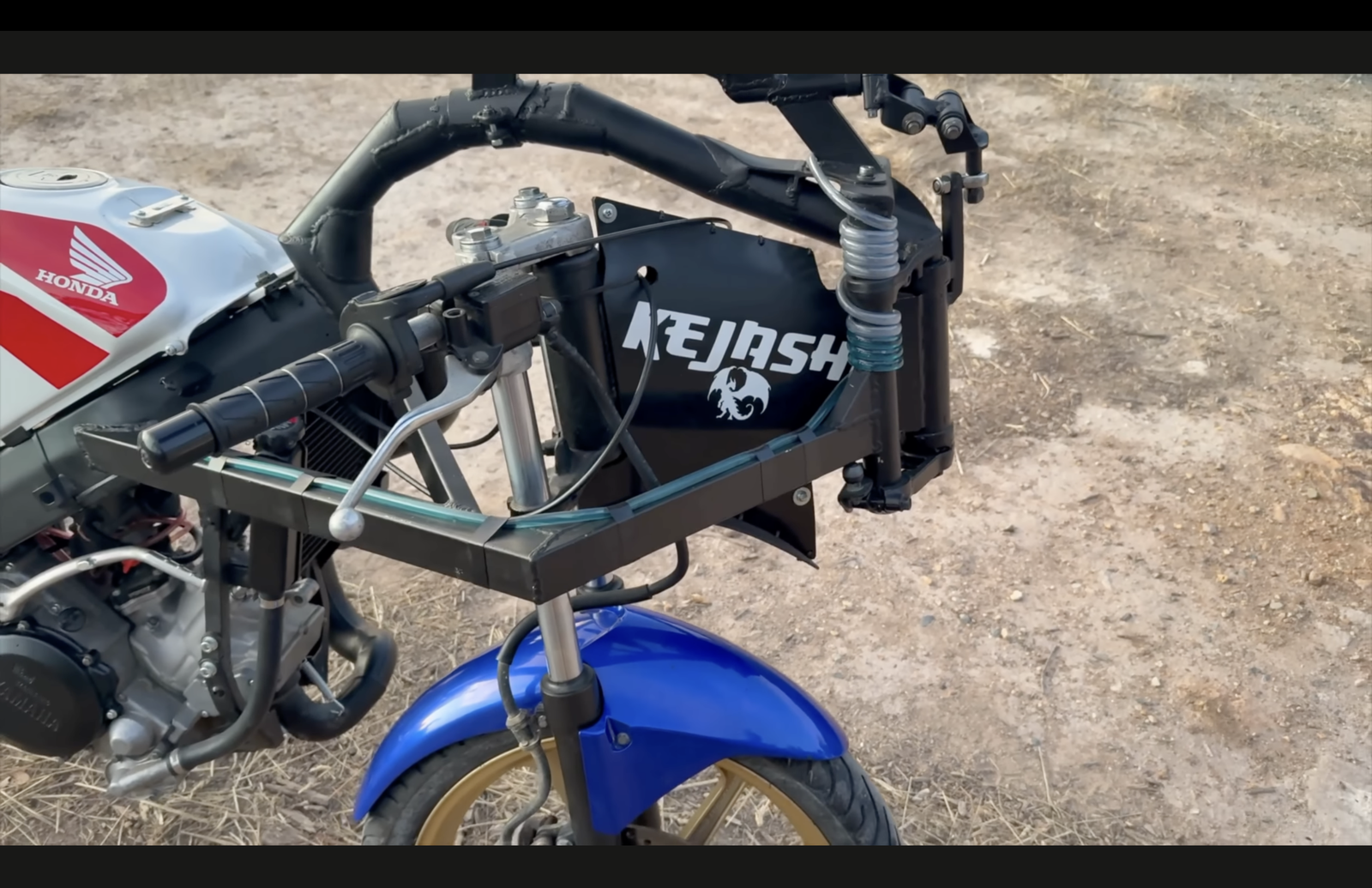
Shillitoe’s idea is to create a system that allows a bike to have one massive wing that remains relatively level. To accomplish this, he developed a system that offsets the front wheel, so you are effectively able to lean the bike without… uh… leaning the bike.
As you go into a corner, the bike’s front end – steering column and wheel - shifts left or right, offsetting from the rest of the bike.
Not too long ago, Shillitoe sat down for an extensive interview with an old friend of mine, Loz Blain, of New Atlas.
“Offsetting the weight toward the inside of the turn, that's what the GP guys are trying to do with their bodies," Shillitoe told Loz. "But moving the wheel toward the outside of the turn naturally offsets the weight of the bike and the rider toward the inside, and reduces the amount of lean angle required.”
Reducing the lean angle means the wing is able to stay more level, which means better downforce. Shillitoe places his wing at the front because that’s where bikes most need downforce.
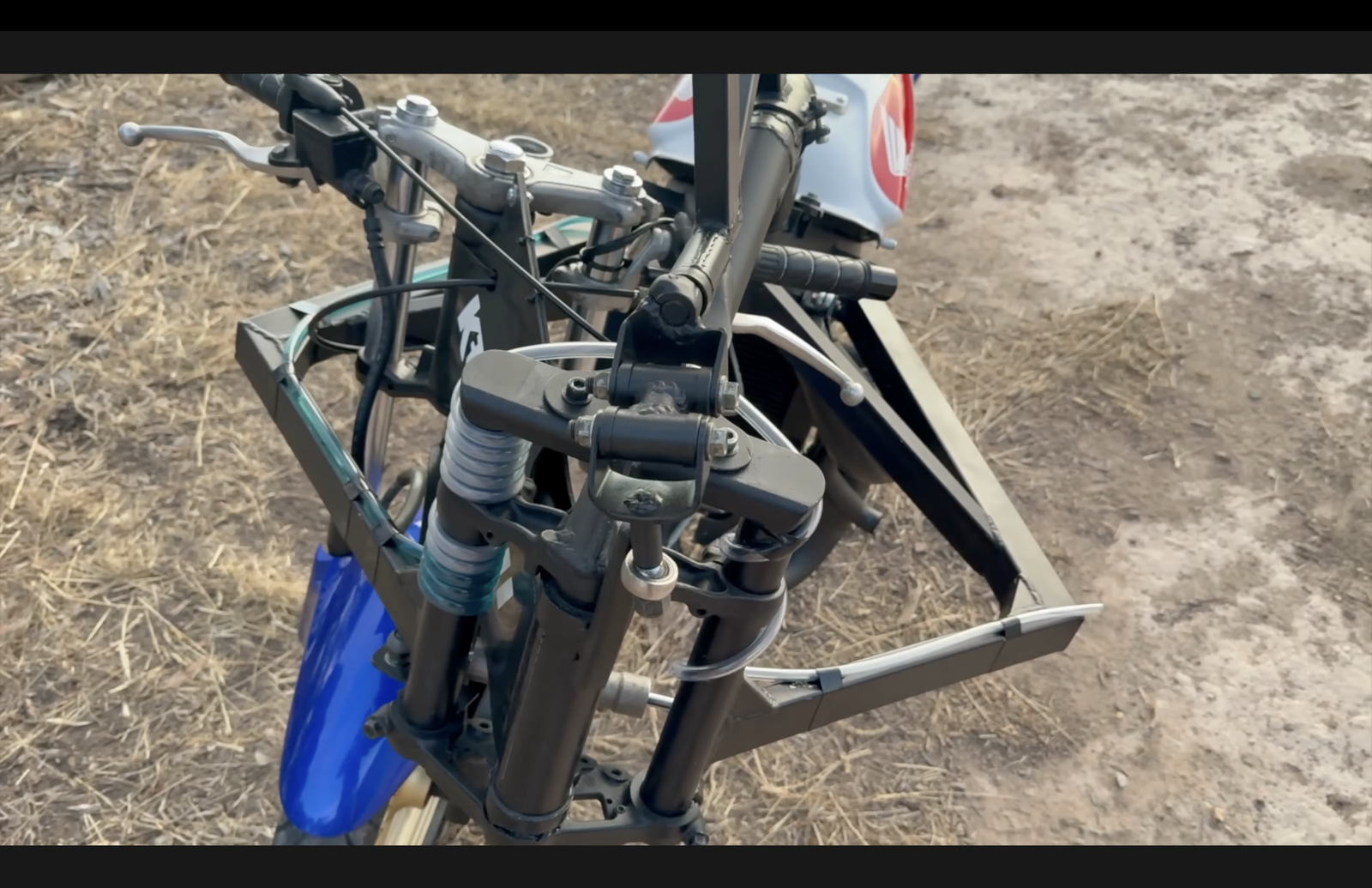
It’s a wild and complicated idea, implemented on a shoestring budget and with an admirable ‘have a go’ attitude.
“Building the front end, I just used the ‘close one eye’ alignment method,” Shillitoe says in the video explaining his bike. “It rides straight (with) no hands on the ‘bars, so it must be close enough.”
Meanwhile, riding the set-up “felt all kinds of wrong to begin with,” he told Loz. “But once you get used to it and trust it – and not look at it – it starts feeling very natural.”
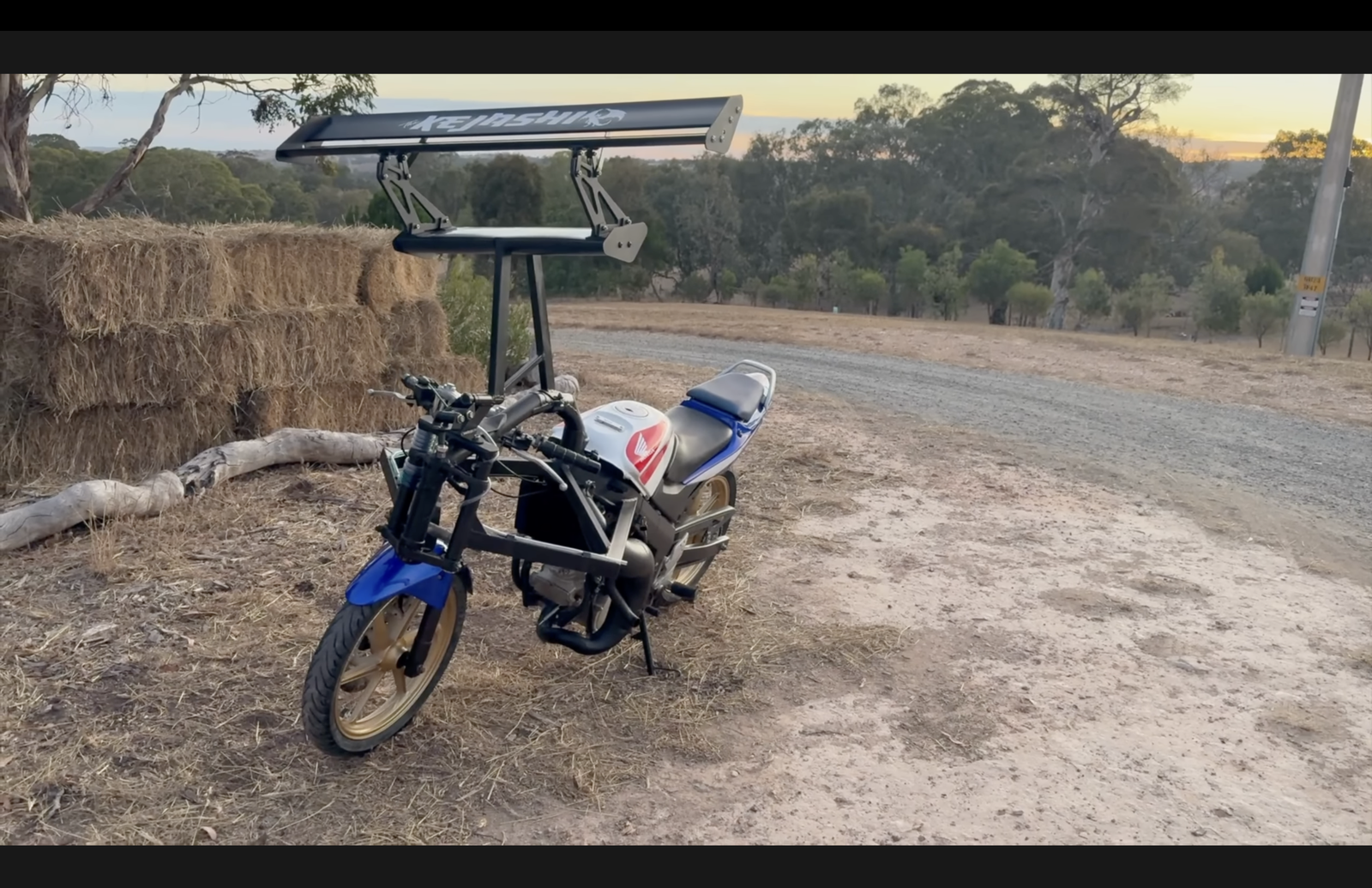
Unfortunately, Shillitoe doesn’t really know how well his system works, as he’s not had much opportunity to test it. With all of its modifications, the bike technically isn’t road legal in Australia. He’s had a few cheeky runs on backroads, but largely he’s only ever been able to test ride his set-up on dirt roads.
“I fully understand that my design has a high chance of failing when it gets pushed to the limits on a track,” Shillitoe says.
But he is keen to push things as far as he can go - to see if he really can help bikes go faster. As Loz points out, if things don’t work out for Shillitoe, he could try turning the wing the other way around - creating upforce and possibly turning the rig into one of those flying motorcycles from Battlestar Galactica.
If you want more help in trying to figure out what the hell is going on here, I’d suggest checking out Loz’s article on New Atlas. In the meantime, for the latest motorcycle news, written by actual humans, stick with Visordown.com.
